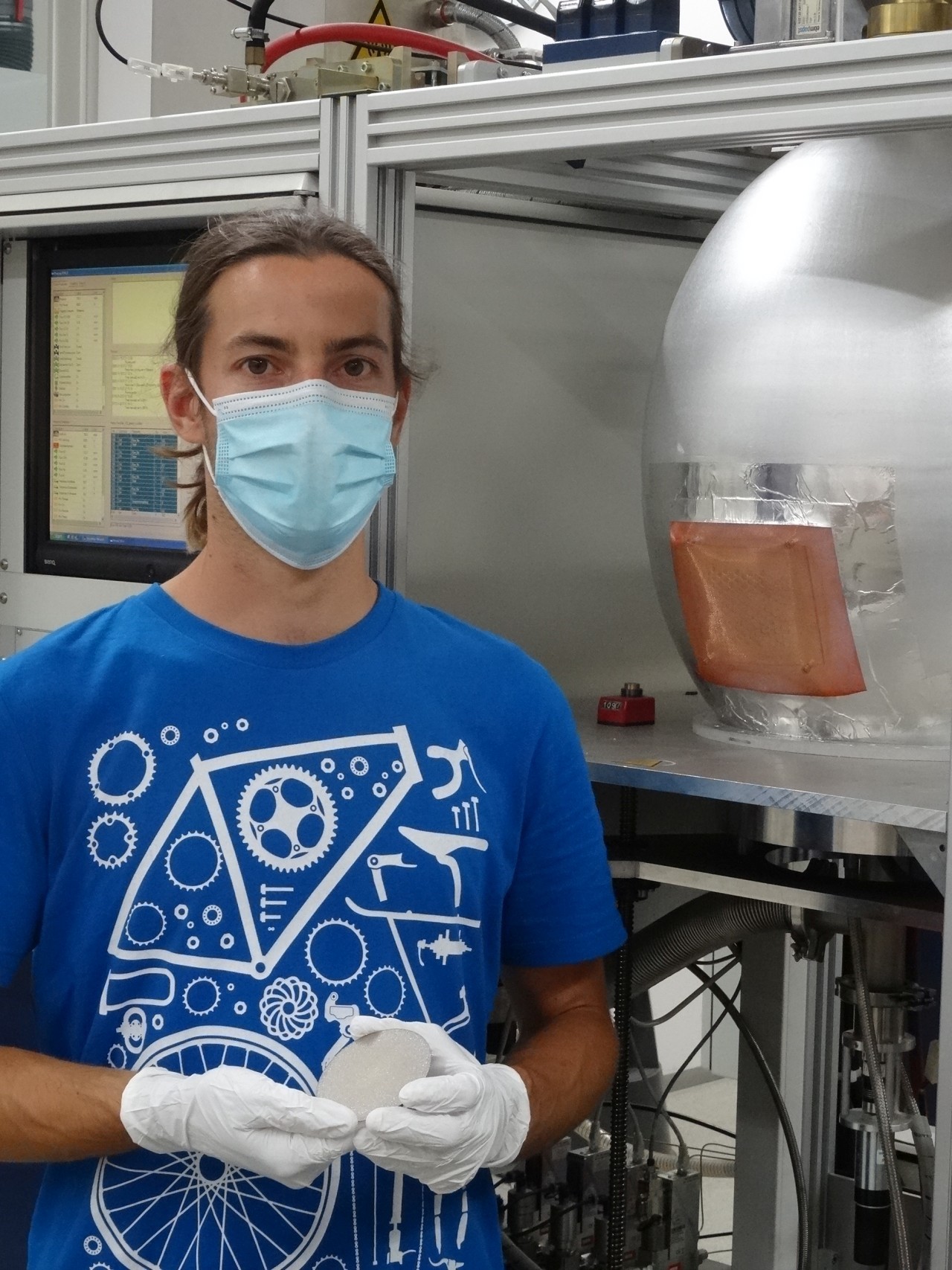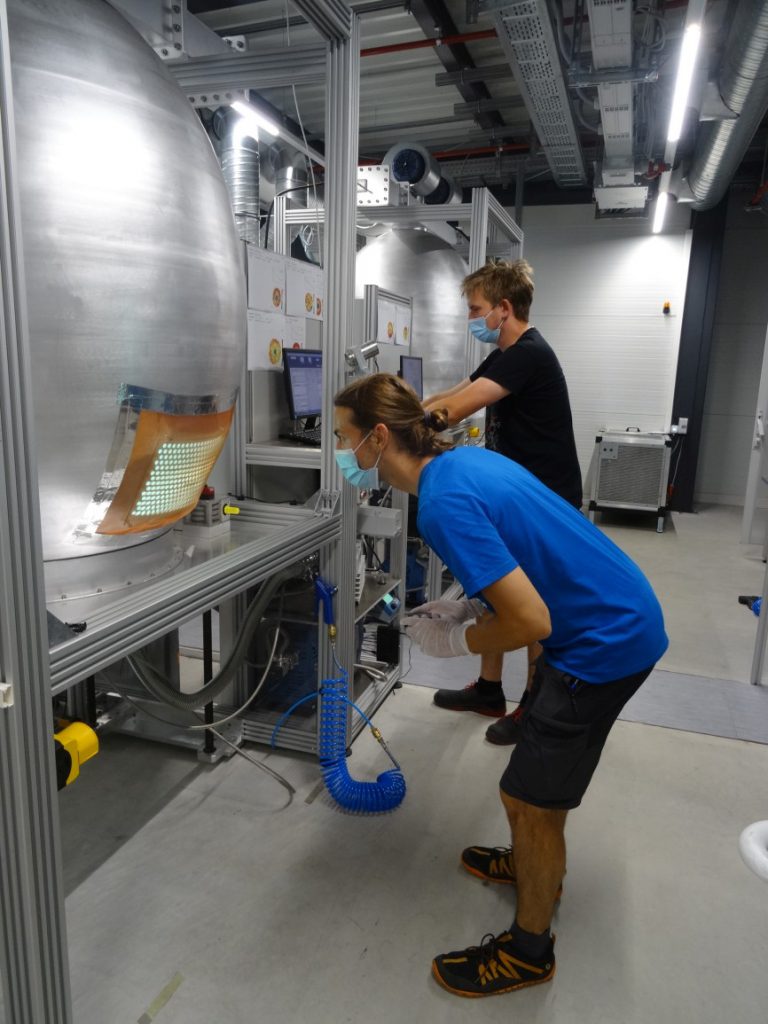Diamonds and flares for a fusion affair

Technician standing in front of a machine used to grow diamond discs for F4E, getting ready to inspect an 80mm free -standing unpolished diamond disc. © Diamond Materials
To keep the “fire” burning of the ITER plasma, several heating systems will need to work together to unleash additional microwave power. They will target different parts of the hot gas to compensate for any fluctuations and losses. How will they succeed to reach the core of the vacuum vessel? Diamonds hold the answer by acting as resistant windows through which the power produced by the Electron Cyclotron and the Upper and Equatorial Launchers will travel in the hermetically sealed vacuum vessel.
Through an F4E contract signed with Diamond Materials for the production of 60 diamond discs, Europe will provide these extremely delicate components that will flare up the super-hot gas, expected to reach 150 million °C. The German SME stems from the Fraunhofer Institute, which boasts a proven track record in the production of Chemical Vapour Deposition (CVD) diamonds. Following the successful completion of the Manufacturing Readiness Review (MRR), their production has officially started counting seven months already.
We visited Diamond Materials to learn more about the basic steps in production. It takes roughly two months to “bake” a diamond and there are currently fourty small furnaces in the factory working round the clock. When the diamond is formed, it gets separated from its substrate. Next, it is cut to comply with the ITER specifications (1,1 mm thick with a 7 cm diameter). Then, the surface of the diamond disc gets polished to be optically tested at the Karlsruhe Institute of Technology (KIT). On average, they will be produced in batches of 7-10 every four months. With tests included, it takes roughly six months for a diamond disc to be ready.

Pablo Estebanez, following the contract on behalf of F4E, gives us further insight. “For each diamond disc we have a separate set of documents to monitor quality standards and production. We are counting so far 1200 documents. You can say that these are amongst the most documented diamonds in history.” The production process, however, is what makes them special. “It’s the first time that they will be produced in such way for a fusion device. Together with the company we are on a learning curve as we breaking new ground.”
“Working for F4E is always a challenge. It takes us to the edge of what is possible and inspires us to go beyond our limits,” explains Eckhard Wörner, CEO of Diamond Materials. “Currently we are facing the challenge of producing the series production. We need to show that what worked well for the prototypes will also work well for the 60 discs. Our staff is highly motivated and proud to be involved in the ITER project, therefore I’m confident about the challenges ahead.”